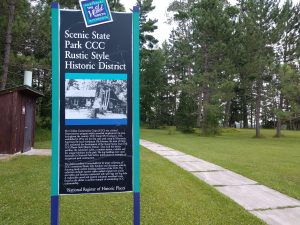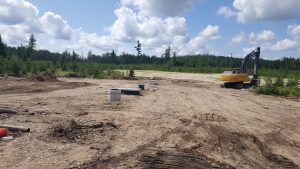Scenic State Park was first established in 1921. A dozen years later, it became the first operational Civilian Conservation Corp (CCC) state park camp in Minnesota, and many of those original buildings still exist today — two historic “districts” listed on the National Register of Historic Places.

Yet this park is as wild as it is historic. 3,360 acres encompassed by lakes and ridges formed by retreating glaciers, plentiful wildlife, mixed forest landscapes, and plenty for the visitor to take in: fishing, boating, hiking, swimming or camping at one of two sizeable campgrounds, large group camp, or rental cabin.
The Minnesota Department of Natural Resources and the Division of Parks and Trails own and operate a wastewater collection and treatment system that serves all visitors and overnight campers within the park. The system was beginning to show signs of age, and after years of consistent tourism growth was receiving higher than expected flow volumes that began to pose a capacity concern. MSA wastewater engineers were asked to perform a field inspection and survey collection of the existing gravity sewer system, then to provide a sewer evaluation report and feasibility study for alternative solutions. The goal was to meet the park’s needs for safe, long-term wastewater treatment while also reducing DNR costs.
Topics covered in the study included a background review of park operations and performance, analysis of sanitary system and existing wastewater flow and loading volumes, evaluation of inflow and infiltration, and projections of future flow and loading volumes to meet proposed park expansion plans.

Ultimately, the feasibility study recommended eliminating the existing treatment pond for a soil-based disposal system. MSA led design-phase services for the project including topographic survey, wetland delineation, biosolids assessment and the design of a new mound system, collection system improvements, 8,000 linear feet of force main, two new lift stations, package pretreatment system, electrical extension and controls, septic tanks, RV dump station replacement, and the decommissioning of the former wastewater treatment pond. As part of the mound design, MSA also performed a surface and groundwater impact assessment focusing largely on phosphorus and nitrogen introduction into the environment.

Throughout, MSA provided construction staking, materials testing, construction administration and observation for the project, hosting bi-monthly meetings with the DNR as well as delivering weekly inspection reports. The project is on target to be complete by end of 2022 and will result in efficient, effective wastewater treatment for years to come.
